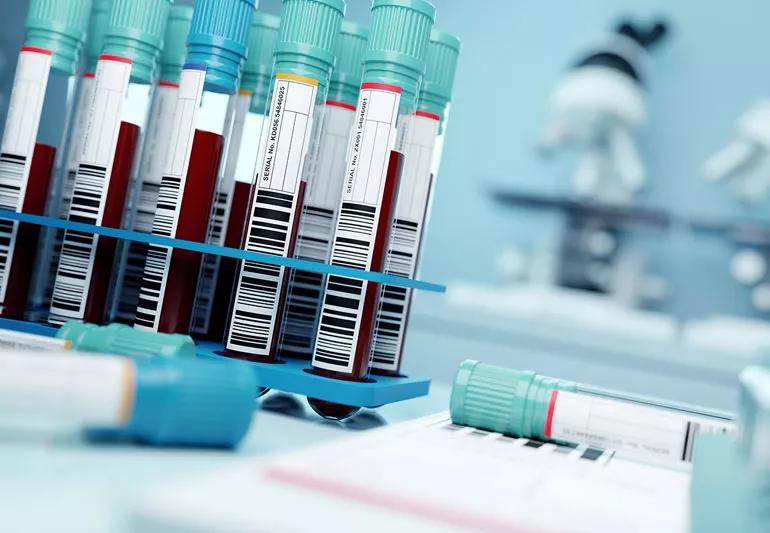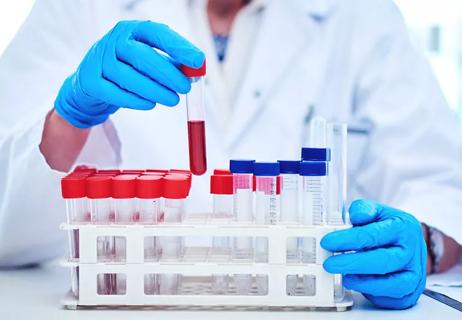The Galleri test can detect more than 50 kinds of cancer

By the end of 2022, according to the American Cancer Society, there will be an estimated 609,360 deaths caused by cancer in the United States. As the second leading cause of death in the U.S., it’s important that we catch, diagnose and treat cancer as early as possible.
Advertisement
Cleveland Clinic is a non-profit academic medical center. Advertising on our site helps support our mission. We do not endorse non-Cleveland Clinic products or services. Policy
While there are standard screening tests for a handful of common cancers, most cancers, including rare cancers, don’t have any tests that allow for early detection. Now, thanks to the Galleri test, there’s a game-changing technique to catch more than 50 kinds of cancer in one simple blood test.
Emeritus Chair of the Glickman Urological Kidney Institute Eric Klein, MD, explains how the Galleri test works, why it has the potential to change the way we diagnose cancer and how it’s different from other cancer screenings.
Currently, there are five cancers that are recommended for screening regularly in the U.S.:
Each of these screenings test for a specific kind of cancer and is done on a semi-regular basis. However, there isn’t currently a way to screen for more lethal cancers like pancreatic or ovarian cancer. These cancers aren’t usually caught until you start showing symptoms, and by then, the cancer has usually developed into stage III or stage IV and may have spread to other parts of your body.
Advertisement
“Currently, we don’t detect the majority of cancers, including highly lethal ones, such as pancreatic or ovarian cancer, until symptoms are present,” says Dr. Klein. “But Galleri can find those cancers at a time when they’re in an earlier stage and before symptoms appear.”
The Galleri test may present a far more efficient way of detecting cancer. Instead of searching for any one type of cancer, it screens an individual for multiple cancers. Its potential is to change the current screening process from screening for individual cancers to one where individuals are screened for multiple cancers with a single blood test.
Many cancers shed DNA into your bloodstream, known as cell-free DNA or circulating tumor DNA. This DNA is usually shed as cancer cells die. Using what’s called Next-Generation DNA Sequencing and machine learning, doctors are able to use a single blood draw (test) to look at various patterns in that DNA code and figure out two things: if a cancer signal is present, and from where the cancer likely started.
These patterns in your DNA are possible because of a biological process known as methylation. During this process, your body expresses certain genes but not others. You can picture it like a wall of light switches: for every switch you turn on, others might turn off, and different configurations produce different results. So, a skin cell will have one configuration, while a liver cell will have another. In the same way, healthy cells will have one configuration, while cancer cells will have a different one. And specific cancer types will have specific configurations different from other cancer types.
“It’s like fingerprints and how fingerprints tell the difference between two people,” explains Dr. Klein. “The methylation patterns are fingerprints that are characteristic of each kind of cancer. They look one way for lung cancer and different for colon cancer.”
If you take the Galleri test, you can have two possible results:
If a cancer signal is detected, the Galleri test is able to identify which organ system the cancer is likely coming from with about 90% accuracy. If this happens, you would then have another test (like a blood test, CT scan or ultrasound of your kidneys, lungs, pancreas or other affected system) to verify the presence of cancer. Then, you can determine what treatment is right for you. The key here is that you’re catching cancer much earlier than you normally would have before you start showing physical symptoms.
Galleri can detect more than 50 types of cancer, including:
This is especially effective when you consider that some of these cancers are extremely rare and highly lethal. In the case of pancreatic cancer, which isn’t normally detected until stage III or stage IV and has a one-year survival rate of 5%, it means you can catch at least some cases much earlier than normal.
Advertisement
“Twelve cancers, including anal, bladder, colorectal, esophageal, head and neck, liver/bile-duct, lung, lymphoma, ovary, pancreatic, plasma-cell neoplasm and stomach cancer, account for about two-thirds of all cancer deaths in the U.S.,” says Dr. Klein. “For these 12, Galleri finds about 40% of stage I cancers, 67% of stage II cancers, 80% of stage III cancers and 95% of stage IV cancers.”
Galleri can detect these cancers because of the DNA it sheds into your bloodstream. That means it doesn’t detect cancers that don’t shed DNA into your bloodstream, like brain cancer.
Depending on the test, traditional screening tests have a false-positive rate of 10% to 40%. Galleri has a 0.5% false-positive rate, which means it’s highly accurate.
“It finds 51.5% of cancers,” points out Dr. Klein. “If you look at the 12 cancers that account for two-thirds of all deaths in the U.S., it actually finds 67% of those.”
And it’s 89% effective in predicting where the cancer started.
Currently, the Galleri test is meant to be in addition to traditional screenings — so you should get screened for cancers as you normally would once you’ve reached the applicable age. But, Dr. Klein points out that as we develop more research and collect more data, it may be possible to test for most cancers in the future using a simple blood test without having to use screening tests of the past.
Advertisement
“This is theoretical, but in the future, all cancer screening could be based on a blood test. But we’re not there yet,” he notes.
Currently, the Galleri test isn’t U.S. Food and Drug Administration (FDA) approved. For now, if you’re over the age of 50 and have a family history of cancer, are at higher risk for cancer or you’re immunocompromised and you’re interested in taking the Galleri test, you should talk to your healthcare provider. They can register with GRAIL and order the test (the healthcare company responsible for developing the Galleri test).
Advertisement
Learn more about our editorial process.
Advertisement

Fewer than 50 people have ever been found to have golden blood, a genetic change that’s also called Rh null blood

A Q&A to prep for your fasting blood test

Basic metabolic panel can point to diabetes, heart or kidney troubles

Any fever, especially one of 100.5 degrees Fahrenheit or higher, should trigger a call to your oncologist — and maybe a trip to the ER

People with sickle cell trait have one copy of an abnormal gene — people with the disease have two

Most of the risk factors aren’t things you can control, but making healthy lifestyle changes and managing other health conditions may help

Smoking can make symptoms from cancer treatment worse, and can even make treatments less effective

Frequent burping can be many things — but likely not cancer

Babies can get congested easily, but you can calm their cough by keeping them hydrated, using nasal drops and running a humidifier

Weight loss may cause loose, sagging skin and muscle loss to your rear

Several conditions, like vitiligo and fungal infection, can cause a loss of pigmentation, leading to white spots or patches on your skin